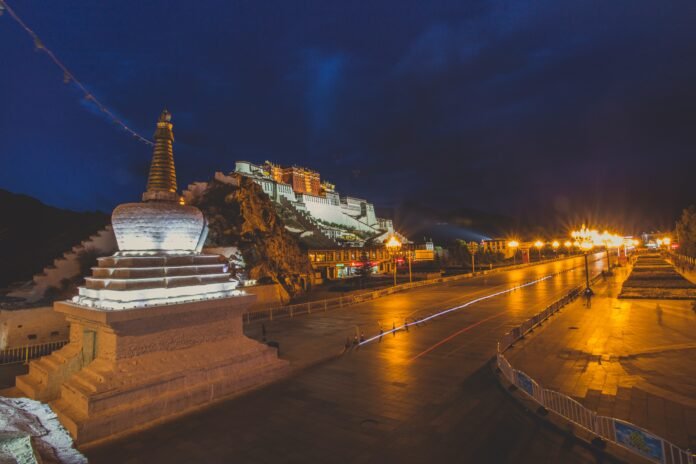The Potala Palace is a stunning and awe-inspiring architectural masterpiece that sits on the top of Marpo Ri hill in Lhasa, the capital of the Tibet Autonomous Region in China. It is a UNESCO World Heritage Site and one of the most iconic landmarks in Tibet.
The palace has a long and rich history dating back to the 7th century when it was built as a fortress by Songtsen Gampo, the first emperor of Tibet. The palace was later expanded and renovated by the Fifth Dalai Lama in the 17th century, who turned it into a grand palace and the seat of the Tibetan government.
The Potala Palace is a grand structure that is divided into two parts, the White Palace and the Red Palace. The White Palace is where the Dalai Lama lived and conducted his administrative affairs, while the Red Palace is a complex of holy chapels and shrines that were used for religious and ceremonial purposes.
The palace is built entirely of stone, wood, and mud bricks and is adorned with intricate carvings, murals, and thangkas (Buddhist religious paintings). The palace also contains numerous priceless treasures such as gold and silver stupas, ancient manuscripts, and religious relics.
The Potala Palace is not just a grand architectural marvel, but it also holds immense religious and cultural significance for Tibetans and Buddhists all over the world. The palace is the spiritual center of Tibet and the most important pilgrimage site for Tibetan Buddhists.
The Potala Palace is a testament to the rich and vibrant culture of Tibet and its unique blend of Buddhism, Bon, and ancient shamanistic beliefs. The palace is a living symbol of the resilience and perseverance of the Tibetan people and their deep-rooted faith and devotion.
The Potala Palace is not just a building, but an ensemble of buildings, artworks, and cultural practices that have been preserved and passed down from generation to generation. The ensemble is made up of physical structures, religious artifacts, and traditional rituals and practices that are still carried out in and around the palace.
The ensemble of the Potala Palace is a living and evolving cultural heritage that is constantly being adapted and reinvented to meet the needs of the present while preserving the legacy of the past. The palace and its surrounding areas are still used for various religious and cultural practices such as pilgrimage, prayer, and festivals.
In conclusion, the Potala Palace is not just a stunning architectural wonder, but it is also a living cultural heritage that embodies the rich history, culture, and spirituality of Tibet. The ensemble of the Potala Palace is a testament to the resilience and perseverance of the Tibetan people and their deep-rooted faith and devotion to their unique blend of Buddhism, Bon, and shamanism. It is a treasure trove of priceless artifacts, artworks, and cultural practices that have been preserved and passed down from generation to generation. The Potala Palace is a UNESCO World Heritage Site and a living symbol of the cultural diversity and richness of the world.
